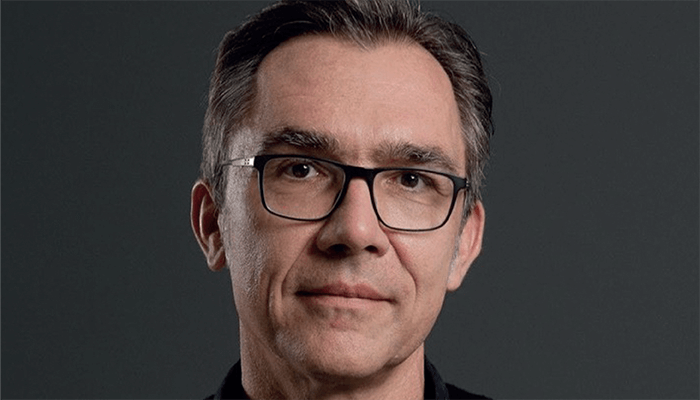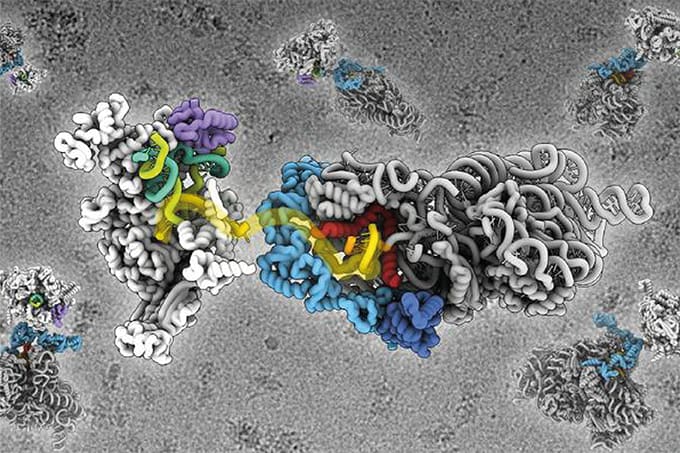Tell us a little about your background in spectroscopy…
Spectroscopy – and Raman spectroscopy in particular – has accompanied me my whole scientific life. I first came into contact with laser spectroscopy more than 30 years ago during my diploma thesis, where I worked with Wolfgang Kiefer – a pioneer in the field of Raman spectroscopy. Since that time, I have been fascinated by both laser and Raman spectroscopy.
My current research group investigates new chemically sensitive linear and non-linear spectroscopic contrast mechanisms, laser technologies, and detection techniques for multi-contrast or multi-parameter imaging of biological and biomedical targets (such as pathogens and their antibiotic resistances, tumor cells, tissue samples, cell organelles, organs, and marker molecules). My research covers the entire range from basic optical/spectroscopic research to translation into clinically applicable methods.

All this work is driven, in particular, by a vision to use spectroscopic approaches – particularly Raman-based methods – for improved medical diagnostics and therapy. We have made significant headway, having developed several compact clinically applicable systems with a high technology readiness level for preclinical and prospective clinical studies.
What are the biggest developments in the spectroscopy field over the past decade or so?
A comprehensive answer to this question is difficult – or even impossible – because the field of optical spectroscopy has developed rapidly in recent years. Therefore, I would like to focus here especially on the development of Raman spectroscopy, which, in my opinion, has become one of the most important optical analytical methods in the last 10-20 years – next to fluorescence spectroscopy.
Though Raman spectroscopy was still reserved for specialists in the early 1990s, it has, in recent years, become a fairly routine method, with applications extending into all areas of the natural sciences – and also into unexpected disciplines like art history. Raman spectroscopy has even left the earth and is flying to Mars!
The main reasons for this are rapid advances in instrumentation, the availability of small, easy-to-use lasers (mainly diode lasers) that no longer require special electrical connections or cooling, the development of the CCD camera as a powerful multi-channel detector, and especially the existence of efficient filters to suppress the elastically scattered Rayleigh light. These advances in instrumentation have led to the availability of easy-to-use, commercial Raman instruments and have greatly expanded the range of applications.
Furthermore, an increased interdisciplinary dialogue between spectroscopists and end users, such as clinicians, has resulted in Raman spectroscopy entering a new era. This application push of Raman spectroscopic bioanalytics over the past 10 years has led to both new hardware and software advances that include new Raman fiber probe designs, field-deployable easy to-use Raman microscopes, and, most importantly, novel data processing techniques that exploit artificial intelligence (AI) for automated analysis of data sets.
The latter is very important – but does not only apply to Raman spectroscopy. The success of spectroscopic methods for medical diagnosis and therapy (and other applications, such as in the life sciences, process analytics, pharmaceuticals, or environmental analysis) is closely related to the development of tailored data evaluation algorithms. In short, measurement data must be translated into qualitatively and quantitatively usable information for the end user – and significant progress has been made in this area in recent years. In fact, we have developed a universally applicable Raman data analysis software called RAMANMETRIX (see: https://docs.ramanmetrix.eu/). This software allows robust and reliable data analysis of Raman spectroscopic data with the click of a button.
Over the past 10-20 years, Raman spectroscopy has evolved from a purely scientific research method to a mature analytical tool with a wide range of potential applications.
What is the single-most exciting development happening in spectroscopy today – and why?
In my opinion, the latest developments in IR spectroscopy (the sister method to Raman spectroscopy) are particularly exciting. For many years, a major problem in IR spectroscopy was the lack of suitable IR excitation sources with a high photon density. This problem has since been solved with the introduction of quantum cascade lasers as highly brilliant light sources; indeed, using these lasers as an excitation source for IR spectroscopy or imaging in the spectral range from 950 to 1800 cm-1 can be seen as a significant milestone. For one thing, they partially compensate for the appearance of strong IR water absorption bands in the IR spectra of biomedical and biological samples that mask other relevant bands. And as the intensity of quantum cascade lasers is several orders of magnitude higher than that of thermal emitters in FTIR spectrometers, large-scale and uncooled microbolometer arrays can be used as detectors instead of the smaller MCT-based liquid nitrogen-cooled FPAs. A spectrometer or interferometer for spectral information acquisition is not needed because quantum cascade lasers are tunable.
Another highly exciting development is photothermal IR microscopy, which is based on the non-radiative transformation of absorbed energy into heat. The use of tunable quantum cascade lasers for IR-excitation causes absorbed heat to locally expand and thereby change the refractive index of the sample, which can be detected with optical systems in the visible range. This allows IR images of aqueous samples (such as living cells) to be acquired with submicrometer spatial resolution. This feat has not been possible before and will significantly expand the application range of IR spectroscopy/microscopy, especially as it relates to biomedical issues.
Finally, I would like to highlight the exploration of a completely new method of IR absorption spectroscopy: field-resolved infrared spectroscopy. In contrast to conventional FTIR spectroscopy, this novel method measures the coherent field emitted by the vibrationally excited molecules after excitation with an ultrashort MIR pulse of a few optical cycles. The detection of this field allows a significant lowering of the detection limit compared with FTIR spectroscopy and thus the analysis of low-concentration molecules in strongly absorbing mediums.
Is there an application area that will benefit most from these developments?
Clinical diagnostics will benefit most – and, in fact, are already benefiting – from all of the above-mentioned developments. The sharp increase in cancer (aging society) and the rapid spread of life-threatening infectious diseases and antibiotic-resistant germs (increasing global mobility and ill-considered use of broad-spectrum antibiotics) represent areas of unmet medical need.
There is a great need for new methods that enable earlier diagnosis of these diseases and, therefore allow initiation of targeted therapy as soon as possible. In recent years, spectroscopic methods have shown their potential to provide clinicians with relevant information to address these medical challenges.
What about major challenges for the field?
A major challenge is the clinical translation of spectroscopic approaches for routine clinical diagnostics. Although research on clinically suitable compact light sources, ultra-sensitive detectors and their linkage with modern concepts for AI continues, translational research in Europe is facing major challenges, especially with regard to the EU Medical Device Regulation (MDR) 2017/745.
Currently, this EU regulation significantly hinders the testing of spectroscopic approaches on patients in the form of preclinical or clinical studies. For example, Raman spectroscopy has proven its potential in proof-of-principle studies for certain diagnostic and therapeutic questions, but the actual performance has not yet been demonstrated under routine clinical conditions in the form of comparative studies in a large cohort of patients.
New types of funding are urgently needed to build on proof-of-concept research to establish follow-up studies according to the above-mentioned MDR guidelines. Special infrastructures that offer open user platforms – for example, under the umbrella of a university hospital – and bundle the expertise of renowned players from science and industry are necessary to accelerate the translation of new diagnostic and therapeutic procedures in the long term. The Leibniz Center for Photonics in Infection Research, Jena, Germany – which was recently included in the national roadmap by the German government – shows what such translational research could look like in concrete terms.




